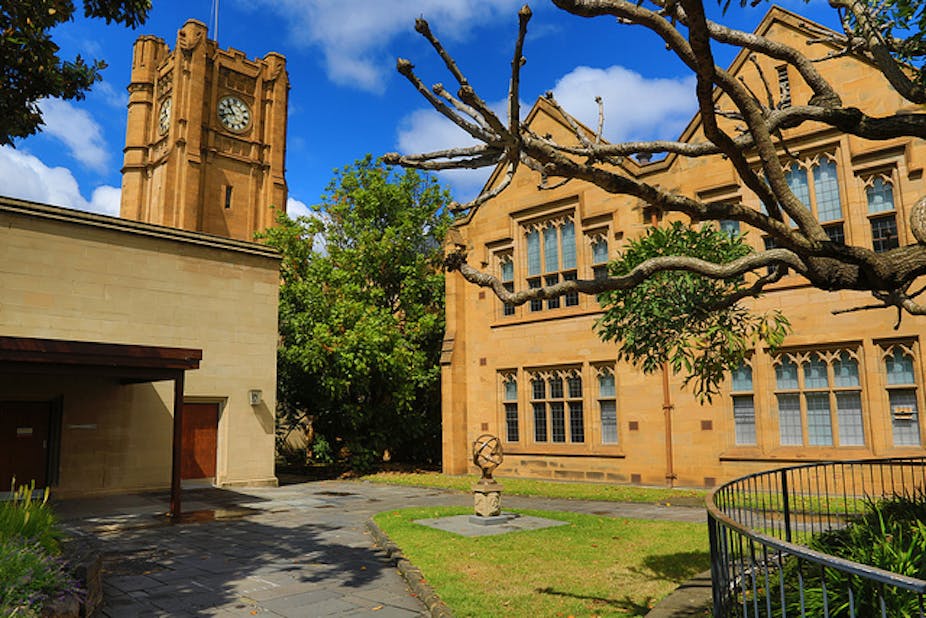Education Minister Christopher Pyne flew several kites in the months and weeks leading up to the budget. Tuesday night’s budget cut their strings. Just where the kites will fly and whether they will come crashing down is hard to say.
If the government can get its proposals past the Senate, Australia will run an unprecedented experiment in fee and place deregulation with few constraints and little direct experience to inform policy, analysis and institutional strategy.
The budget contains many important changes to higher education, each of which warrants sustained analysis. But the future of Australian higher education in five years’ time will be shaped most by three big changes: extending the demand driven system to all providers of all higher education qualifications; removing caps on fees; and introducing fees for research higher degrees.
Institutional restructures
The demand driven system among public universities has put most pressure on campuses and institutions with lower status which are within commuting distance of higher-status universities seeking to expand. The institutions under most pressure are mostly in the outer suburbs and inner regions. They are losing enrolments and having to cut budgets.
Extending the demand driven system to private providers will greatly expand private providers in both numbers and size. Some private colleges and universities will become medium-sized institutions, which will increasingly have to be taken into account in policy analysis and institutional strategies. They will attract even more students from the lower-status universities.
At the same time, online learning is also increasing competition, while changing the relationship between teaching and learning. All universities, including those with no recent background in distance education, are offering many of their subjects and programs by blending on-campus and online learning. This greatly increases the convenience for traditional campus-based students, but it also makes programs more accessible to people whose study is constrained by time or place.
Most of these students are in capital cities, but they have been served mostly by the regional distance education providers such as Charles Sturt, Southern Queensland and the University of New England. Blended learning is making programs offered by nearby metropolitan universities more accessible, diverting students from outer regional campuses and institutions.
Lower-status universities are thus being squeezed from above by higher-status universities and will be squeezed from below by private providers. Some of their futures are threatened. Governments are unlikely to allow any university to fail. But there will be more substantial mergers and other restructures of university campuses and institutions, which one hopes will be eased with restructuring grants.
Fee blowout
There is no reason why a high-prestige university should not charge fees of $1 million a year. Students would get a gold-plated education without ever having to repay much of the fee they have been charged and the university would get richer.
It is hard to anticipate how most students and institutions will respond to deregulated fees. However, it may be worth stimulating thought with a few speculations.
I expect most universities will initially increase their fees for most programs by about 50% to compensate for cuts in the Commonwealth contributions announced in the budget and to relieve pent-up cost pressures. The institutional and program market leaders will double their fees. If that doesn’t dampen demand too much, other institutions and programs will follow with doubled fees and the leaders will increase their fees even further.
At this point fees will be so high that the proportion of new HELP debt not expected to be repaid will far exceed the 23% the budget projects for 2017-18. At some point the government will decide that it should no longer absorb this unpaid debt, which would effectively be a subsidy for yet more fee increases. The government is likely to contemplate financial caps, but rather than recapping fees it may be more likely to reintroduce lifetime borrowing limits, which it is proposing to remove from Fee-Help.
Research
The government’s proposals for research warrant a separate discussion, but the biggest change in research funding will be a big increase from higher tuition fees. This will further strengthen most Australian universities’ already strong research, particularly those that make the biggest fee increases.
The government proposes to cut funding for the research training scheme but will allow universities to charge up to $3,900 per equivalent full-time student for high-cost programs and up to $1,700 for lower-cost programs. Since HELP loans will also cover these fees, they are unlikely to affect demand much. But many of the arguments for removing the caps on undergraduate fees will be made for research higher degree fees and these will also be uncapped in time.
System shape
The higher-status institutions will be dominated by students from high and upper-middle socioeconomic status backgrounds and have few students from a low socioeconomic background. The 20% of additional fee revenue the government will require universities to allocate to scholarships will make it easier for the few disadvantaged students who are accepted by the elite universities, but will not markedly increase their proportion.
The result will not be the two-tiered system of institutions that students are protesting against, and still less the different categories of institutions that some still seek, but a more explicit, ordered and steeper hierarchy of institutions by fees and hence funding, research, status and elitism.

